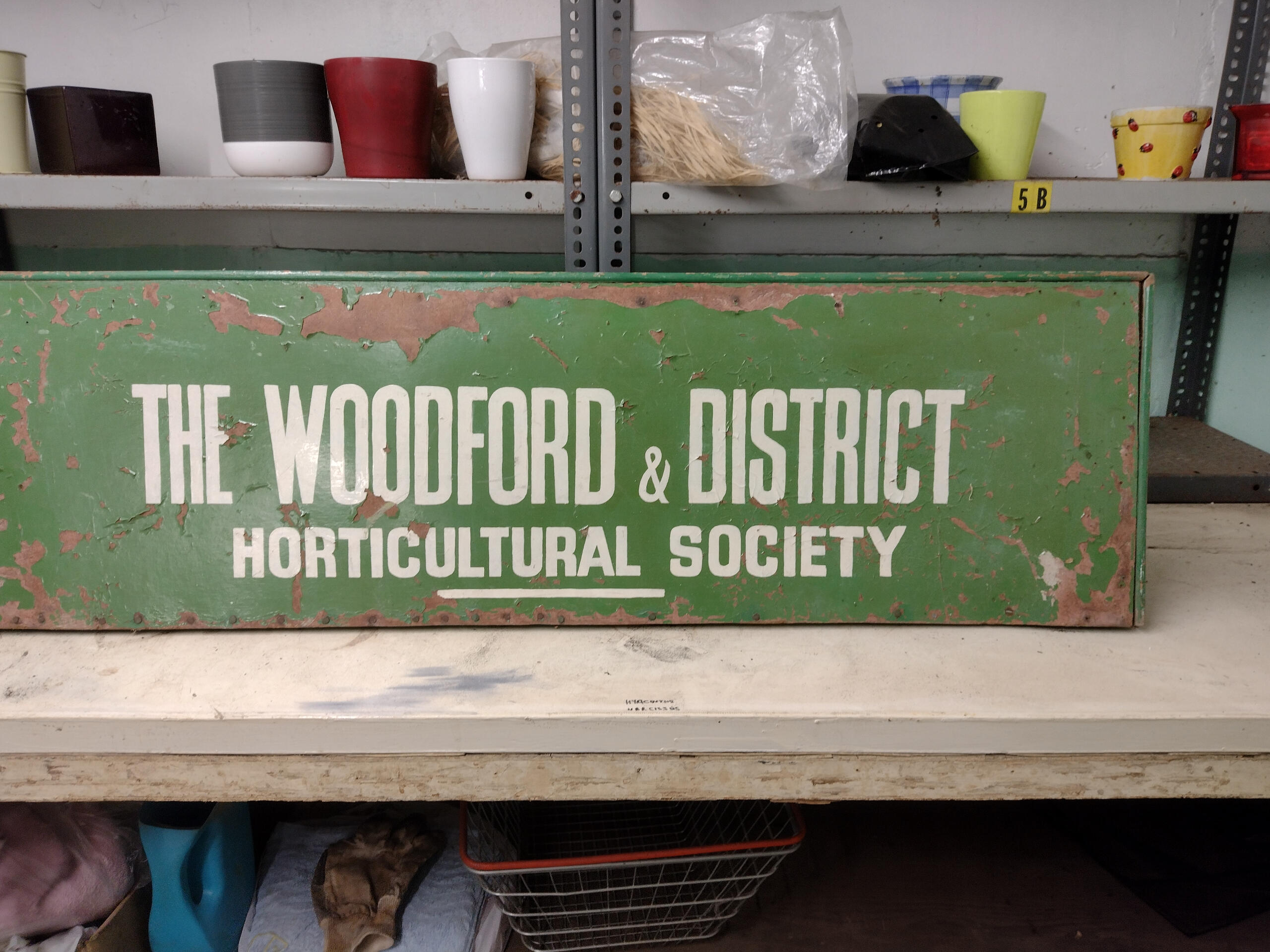
Woodford & District Horticultural Society
Woodford and District Horticultural Society is no longer trading. It has been permanently closed by the landlord, Redbridge Council.
The closure has happened because of the location under the closed Broadmead Road bridge.
The space once occupied by the Woodford and District Horticultural Society at Scoter Close is now completely empty.
You can send a message to us below.
HELPING WOODFORD’S HEDGEHOGSHedgehogs are a beloved part of our British countryside, but like so many other aspects of our wildlife, they are under massive pressure to survive in our modern world.In the 1950s, there were around 30 million hedgehogs in the United Kingdom. Now there are less than one million. A variety of factors have led to this cataclysmic decline and unfortunately, humans have had a massive part to play in their demise.The huge growth in cars on the road, pesticides used in fields and gardens, together with the loss of habitat are the main drivers of this fall in their numbers.So, what can we do to help?1. First, we need to help them travel the mile a night they require to gather enough food to eat. Modern gardens have shut off their borders to all wildlife. If you make a CD-sized hole in your fences, or dig a little gap under gravel boards, it will create a hedgehog highway to allow them to pass through.
2. Do not use any pesticides or poison in your gardens! Slug pellets kill slugs and snails for sure, but they also kill the things that are their natural predators, like hedgehogs and song thrushes. This causes them to have a slow and horribly painful death.
3. Create a wild corner for hedgehogs to nest and hide. A recent British obsession is to have neat and tidy gardens. This is fatal for our natural wildlife! A messy log pile in a quiet corner of your garden will provide food in the form of beetles and other tasty insects, along with much needed safe shelter.
4. Hedgehogs also like to make their nests in long grass, so ALWAYS CHECK THOROUGHLY for hedgehogs before strimming or mowing. Hedgehogs are arriving at wildlife rescue centres with horrific and often fatal injuries.
5. Hedgehogs can get tangled in wire or netting left carelessly in corners of the garden. Please always check that you have disposed of potentially dangerous items for wildlife.
6. Hedgehogs struggle to find low-lying water, especially in dry conditions. Please leave shallow bowls of water for them to drink from (with a few stones in, so that pollinators can safely land there too).
7. With fences shut off, hedgehogs also struggle to find food. Leaving out dry meaty cat food, like Go Cat, will help them survive in lean times.
8. A wooden hedgehog house tucked away in a quiet part of the garden, is a great way of providing a safe home for a hibernating hedgehog.
9. A pond attracts a fantastic array of insects, which is great for wildlife. Always check that you have large stones or a sloping side, so that thirsty hedgehogs can climb out if they fall in. Always make ponds safe for children too.
10. There are hedgehogs in Woodford, but do you know if there are hedgehogs about in your area? Hedgehogs are nocturnal and shy, so you may be unaware that they visit your garden. They leave little black droppings as their only evidence and these are different to foxes as they are solid.
11. The loss of hedgerows and use of pesticides in the countryside have meant that in some areas, hedgehogs have been wiped out completely. Our gardens can provide a much-needed safe haven for these gorgeous, beleaguered creatures.
12. Finally, please move bonfires at the last minute before lighting. Hedgehogs like to sleep under log piles and are killed when fires are lit, as they curl up in a ball when they sense danger, rather than running away.Good luck in attracting these amazing little mammals to your garden! 🦔
**BIODIVERSE GARDENING **In the UK, our patchwork of around 23 million different gardens provides an amazing opportunity to help wildlife and nature. The land they cover is bigger than all the United Kingdom’s national reserves put together and so the way we treat our little patch of land can have a huge impact on our fragile ecosystem.Why do we need to do this?
Insects are the main drivers of our ecosystem and the biggest threat to them is believed to be intensive farming, as the use of pesticides and fertilisers are fatal to insects. In the countryside, hedgerows have been uprooted and fields are vast prairies of monoculture (a single crop) which leaves no room for a diverse insect population. Climate change is also playing a part. As natural environments dry out, many species can’t cope - hence insect populations are crashing.2% of insects are already extinct.
40% of all insects are declining fast (remember driving along in the 70s and your windscreen was covered…). Now there is nothing!
The UK’s flying insect population has declined by around 60% in the last 20 years.So, what can we gardeners do to help?1. Just putting out a shallow bowl of water, with a few stones in it for pollinators to land on, can literally be a lifesaver for insects and small mammals.
2. Choose plants that feed hungry pollinators. Natural, native plants that have not been cross-bred, are vital for their food supply.
3. Introduce a pond! Even an old washing up bowl buried up to its neck in soil, is better than nothing. Put large stones in there with the very top above water, so that small mammals can climb out easily and won’t drown if they approach it for a drink. Frogs will quickly find it and they, in turn, will provide a natural way to obliterate slugs, snails and flies. Always make sure it is safe for children too.
4. Have a little wild area in the garden, a small pile of decaying wood is best. This provides warmth and shelter for beetles and other insects, which in turn, are a vital, natural food for birds and hedgehogs.
5. Leave the leaves! We have developed an obsession with tidy gardens. However, insects shelter in autumn’s fallen leaves and worms also drag them underground to give nutrients to the soil. If you rake up leaves and throw them away, you are literally throwing away all of your insects for next year.
6. Short, manicured lawns are a barren wasteland for insects. Leave lawns to grow for at least a month at a time, and add white clover as food for bees. Leave the edges of your lawn slightly longer to help wildlife and scatter bee-friendly flower seeds.
7. Start composting! Compost bins are available to buy from Redbridge Council and they have a 40% discount offer and free composting workshops for residents in the coming week. Kitchen peelings, grass cuttings, and cardboard are among the things you can put in your compost bin. It quickly makes top quality soil which is full of nutrients and is amazing for your garden. It also is a way of reducing what you send to landfill and therefore prevents damaging methane escaping from landfill sites.
8. Get a water barrel! This is a great way of storing a natural source of water which is not high in nitrates. This natural rainwater is so much better for ponds and bowls of water for animals and, of course, is better for the environment.
9. Bird feeders are a marvellous way of getting food to hungry birds. Fat balls are great in the spring and seeds are best during the winter.
10. Having a tree in your garden is a wonderful addition for wildlife, whilst growing hedges in urban areas is the best way to help birds, as they provide a safe shelter. Take care not to strim hedges between March and August, as birds may be nesting.
11. Last, and most importantly, poisons and pesticides have no place in our gardens. They kill far more than the weeds and ‘pests’ that annoy us. We need to work with nature, not against it!.
Send a message to the group......
Please bring this form along to our depot on Scoter Close Woodford.














